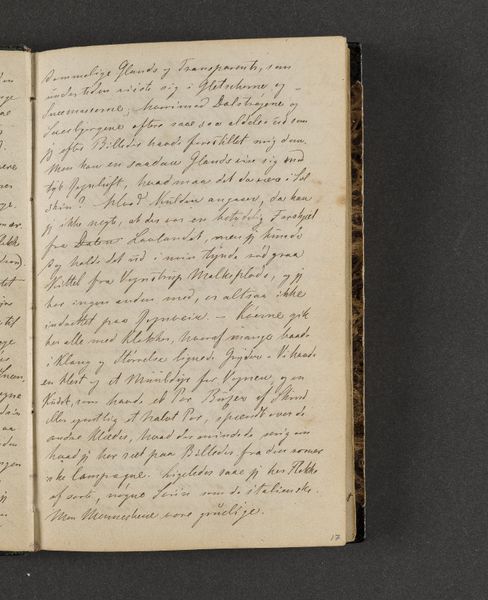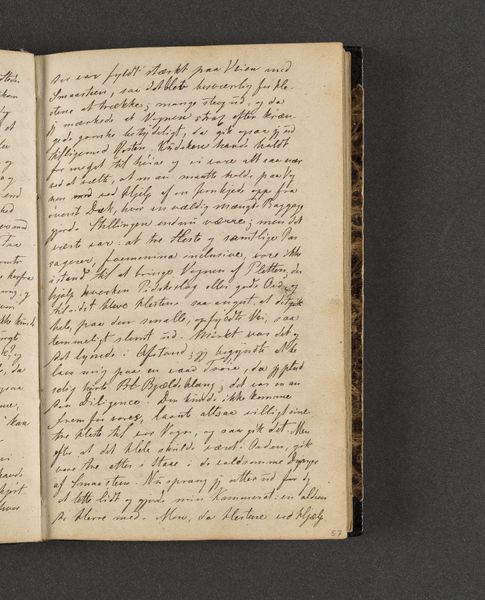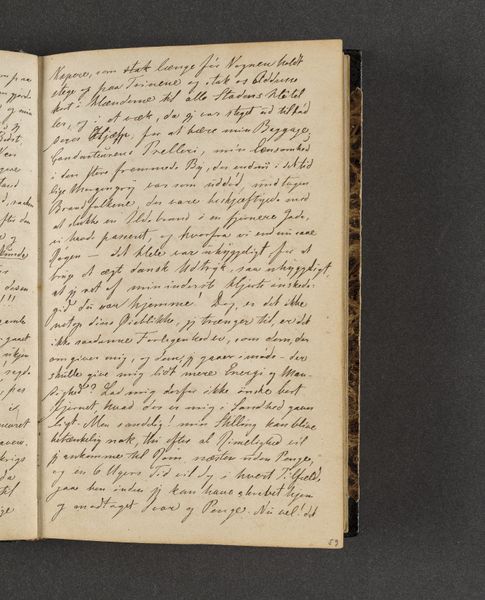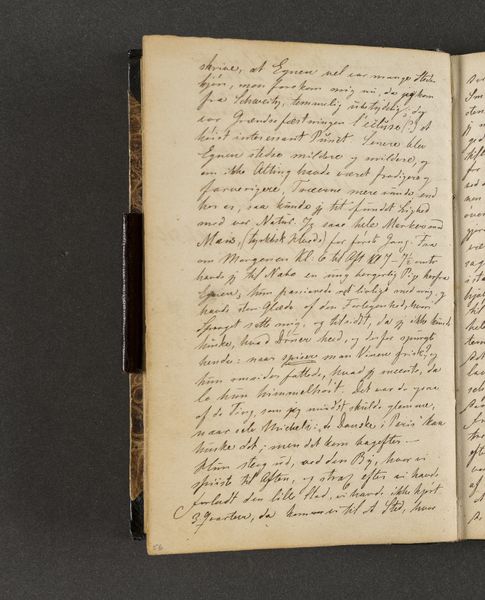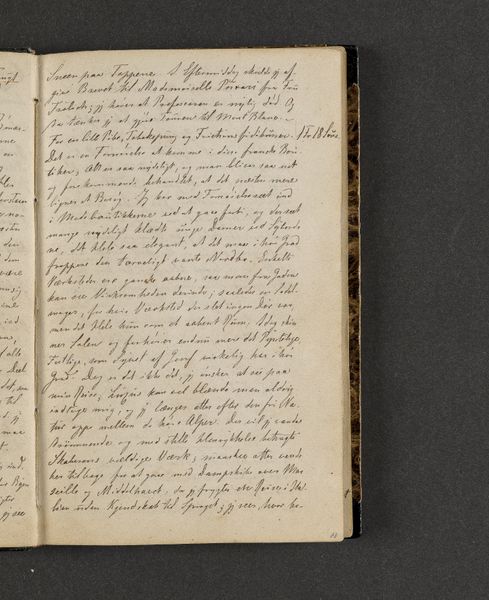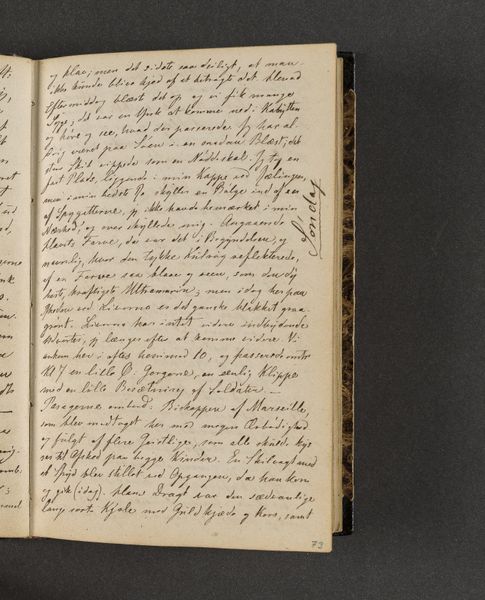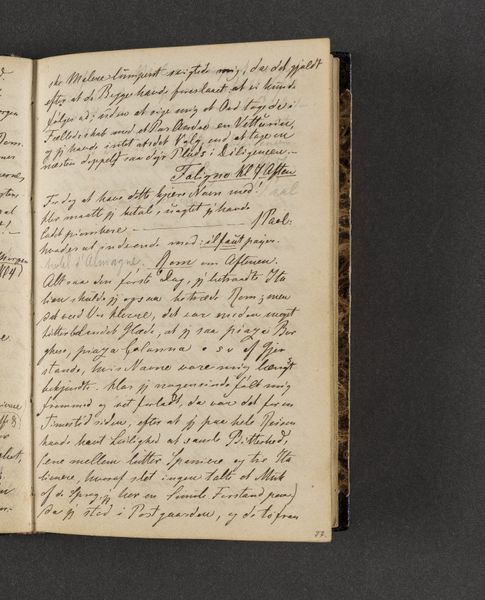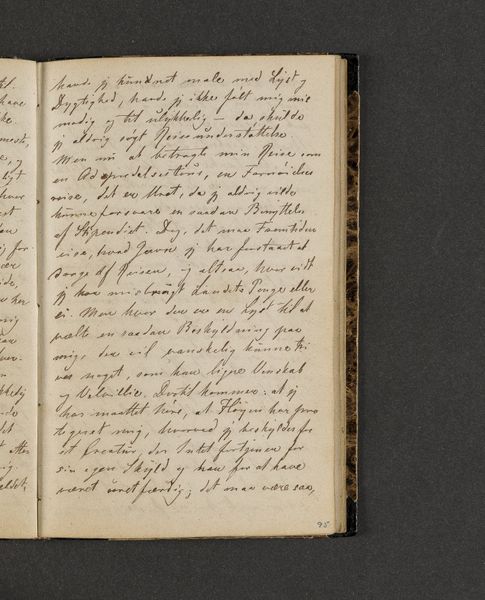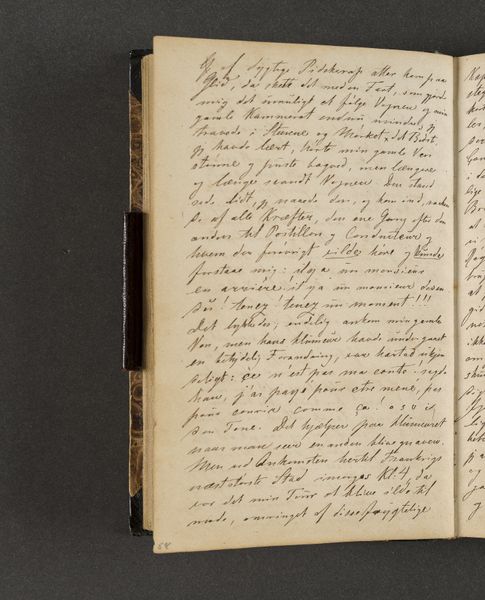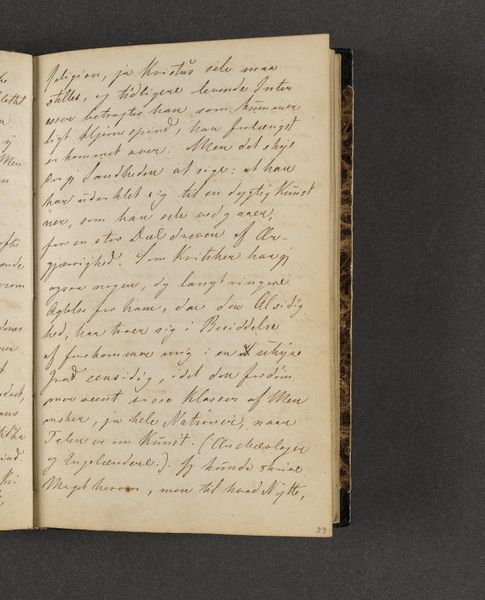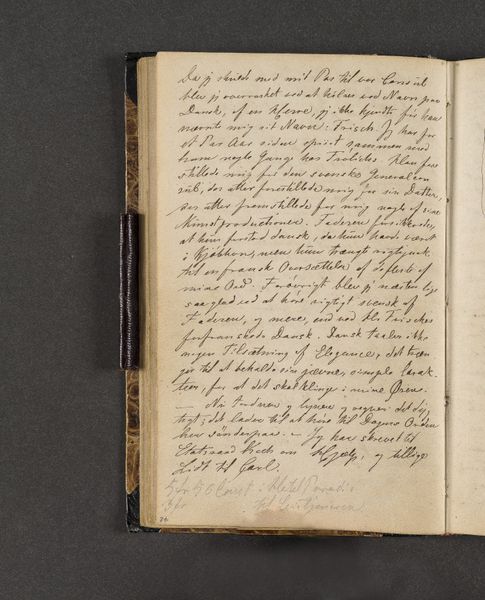
drawing, textile, paper, ink
#
drawing
#
textile
#
paper
#
ink
#
romanticism
Dimensions: 161 mm (height) x 103 mm (width) x 11 mm (depth) (monteringsmaal)
Curator: This drawing is titled "Rejsedagbog," or "Travel Journal," created around 1845 by Johan Thomas Lundbye. It’s rendered in ink on paper, bound within a textile cover. Editor: The script seems so private and dense, yet open on the page like a confession or proclamation, though to whom, and for whom, seems lost, veiled behind Lundbye's hand. I’m interested in the visual impact of the open book. Curator: Considering the Romanticism movement prevalent at the time, we might interpret the journal as Lundbye grappling with his identity within a world rapidly changing, especially the effects of burgeoning Danish nationalism. The act of documenting personal experiences through travel aligns with Romantic ideals. Editor: The visual of handwritten text itself possesses cultural symbolism. Before mass literacy and widespread printing, handwriting conveyed power and intellect. It speaks to intimate experience. What hidden emotions are recorded, shaped and obscured? What was not printed? Curator: Precisely. Handwriting also emphasizes the individual perspective against the backdrop of standardized, printed materials. The diary form is in itself a potent symbol of self-discovery. Reading between the lines—literally and figuratively—allows us to uncover the tensions between personal identity and public life in mid-19th century Denmark. I find it moving that, bound in textile as it is, that this is almost like holding time. Editor: A compelling thought, the textual fabric enfolding moments. The journey isn't simply geographical, but psychological and emotional, each word carrying the weight of experience, coded for future unravelling. So this journal speaks to cultural ideals, through the author's journey and intimate reflections. What more might be woven into this tapestry?
Comments
No comments
Be the first to comment and join the conversation on the ultimate creative platform.
